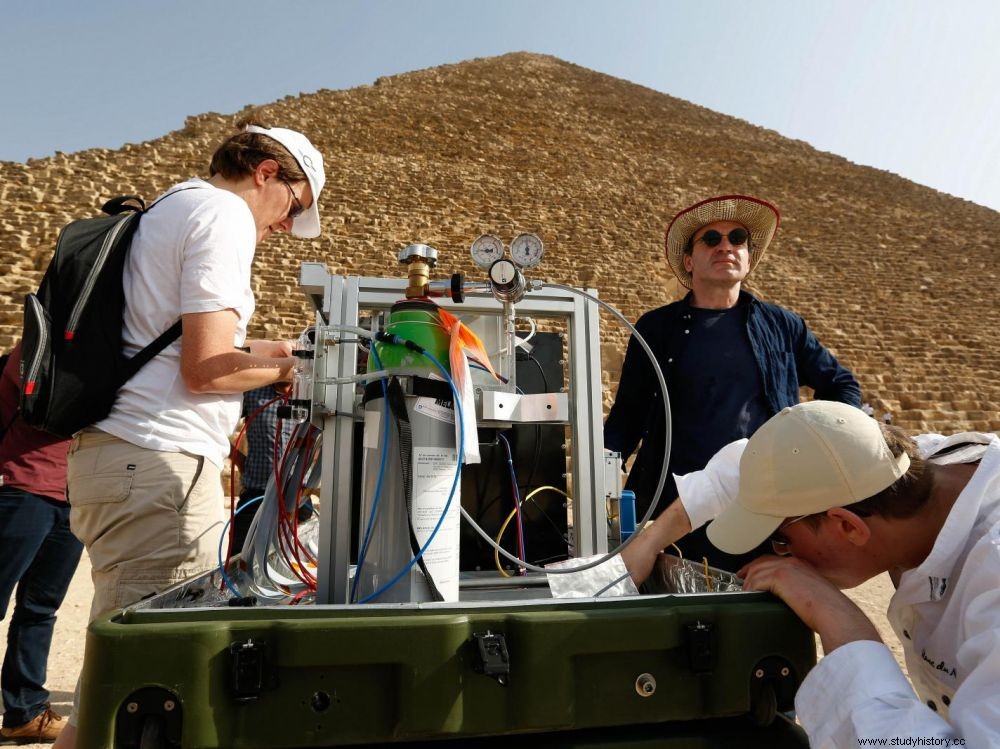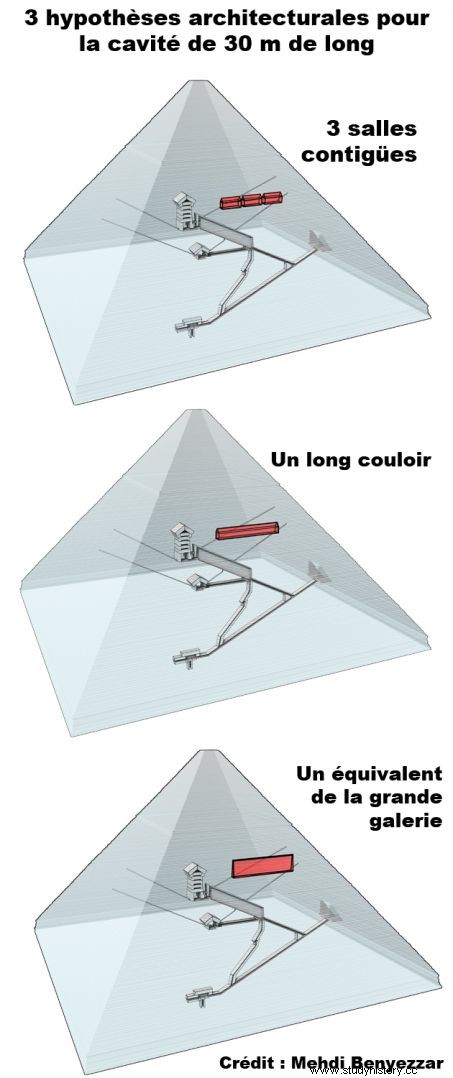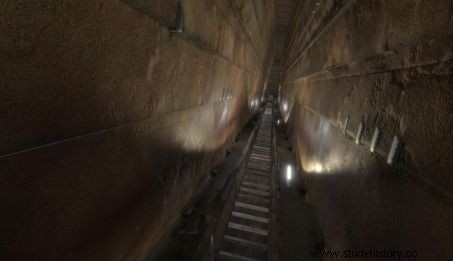ScanPyramids mission scientists publish in Nature this November 2, 2017 their discovery of a huge cavity in the great pyramid of Cheops. Could we find the pharaoh's mummy there?

On the left, Sébastien Prosecutor, from the CEA, in front of the muon detector used to scan the entrails of the Cheops pyramid.
UPDATE. Egyptologists Guillemette Andreu-Lanoé and Peter Der Manuelian react to the discovery of a new cavity in the pyramid of Cheops.
No theory so far – and yet there are many! – had not foreseen a void of such magnitude at this level of the Cheops pyramid. And it will no doubt be very difficult for Egyptologists to imagine its nature and function. Even if some have agreed to play the game with us (to be read soon on the Sciences et Avenir website ...) One thing is certain, this is not a construction error. The monument reaches such a level of architectural perfection that an anomaly of this size seems difficult to imagine. Nor is it a simple landslide or a "gruyère" area made of small poorly jointed blocks as suggested in their time by two pyramid specialists, the American Mark Lehner and the Egyptian Zahi Hawass, head of the committee scientist appointed by the Egyptian Ministry of Antiquities to monitor the progress of the ScanPyramids mission.
What's inside the cavity in the pyramid? Ultimate fantasy:the mummy of Cheops
"If this was rubble chaos, muographic readings would indicate low underdensity all over, explains Sébastien Prosecutor, scientific manager at Irfu/CEA.Now, we have a strong local under–density" . The images obtained are moreover identical to those of the large gallery… which is nothing like a Swiss cheese! We already know that the cavity is located in the same plane as all the known structures of Cheops. Specifying its shape and inclination is now the objective of the mission.

If it is parallel to the large gallery, and therefore inclined, it could have the same function. The problem is that this function remains widely discussed. The great gallery, an incredible cathedral-like structure, with its height of 8.60 meters and its corbelled vaults, is a unique device. No other pyramid than Cheops has one. For some Egyptologists, it is a symbolic arrangement linked to the journey that the sovereign must make to be reborn with the sun.

The great gallery of the pyramid of Cheops. Credit:Philippe Bourseiller for ScanPyramids.
Other specialists think of a practical function. Such as the architect Jean-Pierre Houdin for whom the large gallery made it possible to implement a system of counterweights in order to mount the enormous granite blocks of the King's chamber. If, on the other hand, the new cavity turns out to be horizontal, it could be a series of corridors and/or rooms. And now the old fantasy reappears:that of finding “stores” containing funerary furniture… or a room still hiding the mummy of Cheops! Did not the Egyptologist Zahi Hawass himself assert on several occasions that he thought the remains of the king were still hidden in the colossal tomb?
